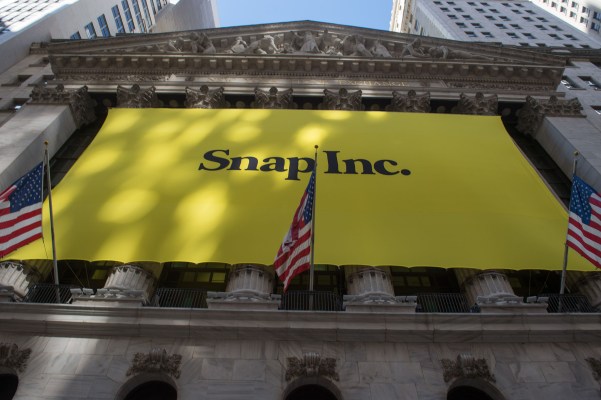Goodwater Capital, a two-year-old, San Mateo, Calif.-based early-stage venture firm, has been trying to stake out new territory for itself by publishing a steady stream of research and tools that help inform both competing firms and startup founders. One of those pieces of research was a detailed snapshot of the tech company Snap, which Goodwater published in early February, shortly before the company went public. (We wrote about it here.)
Three months later, armed with fresh survey data of 3,000 Americans across the country who Goodwater recently polled using a third-party service, firm co-founder Eric Kim — who isn’t a shareholder — says he’ll be listening for three things on Snap’s very first earnings call tomorrow:
1) Snapchat’s competitive response to Facebook’s steady stream of attacks on its core platform.
“Snapchat’s stories platform has maintained market share over the last six months, but during that same period, Facebook has converted a whole lot of non users into users of its own [stories] platform,” notes Kim. “While Snapchat had and still has 12 percent market share of the story user base, Facebook has now grabbed 14 percent market share,” with Instagram Stories now claiming 200 million daily active users versus Snapchat’s 158 million users.
It matters how Snap plans to respond, of course, because Facebook’s success and Snapchat’s future are more directly correlated than Snap might like. Which raises the second issue that Kim will be focused on, and that is:
2) Snap’s daily active user outlook.
“The expectation for this quarter is that Snap will add anywhere from seven to nine million users from the previous quarter,” says Kim. What Goodwater sees in its survey data might concern shareholders, however.
“Fifty-nine percent of respondents under age 30 said they use Snapchat, and 81 percent said they use Facebook, so the [two platforms] aren’t mutually exclusive,” he notes. That’s the good news. Here comes the problem: “For survey respondents under age 30, 46 percent said they expected to increase their usage of Snapchat going forward; of those over age 30, just 10 percent said they expect to increase their usage of Snap.”
When it comes to users ages 30 and up, the numbers for Facebook are far more encouraging, notes Kim. To wit, 65 percent of people under age 30 who were surveyed said they plan to increase their use of Snapchat going forward. But almost an identical percentage — 64 percent — said they expect to increase their use of Facebook.
Wait, you might wonder: How can anyone draw conclusions based on a survey of 3,000 people when the broader population of the U.S. is roughly 300 million? We asked Kim that very question. Noting that Goodwater employs several data analysts, he insists that it is “directionally correct.”
Which leads us to the third thing to which Kim will be paying close attention tomorrow, and that is:
3) What’s happening on the monetization front.
You knew that one was coming. “What we think is key, and we’ll be looking for, is what Snapchat is working on that caters to advertisers,” says Kim.
For the most part, he observes, Snap’s ad dollars are coming primarily through advertisers’ experimental budgets. That’s okay, of course, but it’s not going to reassure shareholders. What might comfort them is knowing what’s in the pipeline, along with learning whether some of Snap’s newer products — including a new self-serve ad manager and an API technology that it unveiled last fall — are enjoying some traction. “That’s a very important part of the story,” Kim says.
Kim adds that one last thing he’ll be curious to see is who does the talking tomorrow. “If it’s [Snap CFO Drew Vollero] doing a lot of hand-waving about financial and user growth, the market will be sorely disappointed,” says Kim.
“If [CEO] Evan [Spiegel] is on the call,” he says, “and he’s talking about product strategy and Snap’s ‘anti-Facebook’ strategy,” that is (yes) another story.
